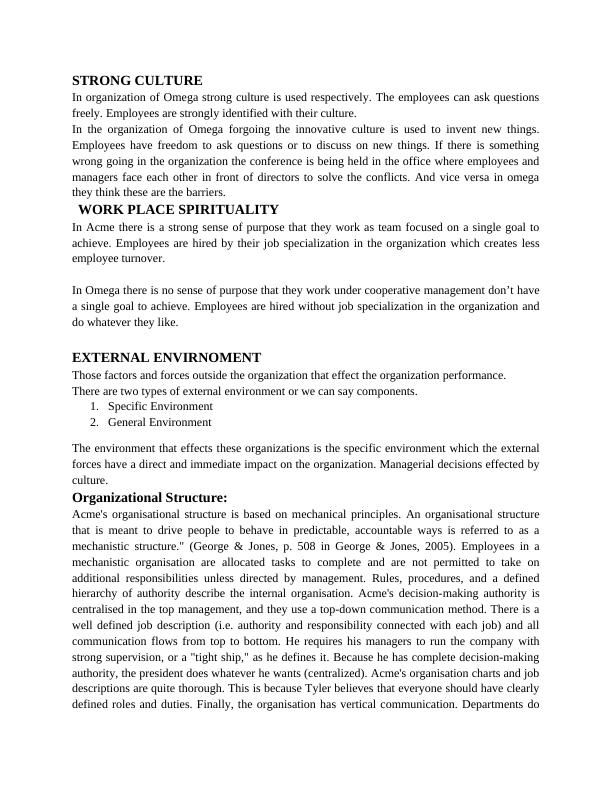Strong Culture and Workplace Spirituality
3 Pages1342 Words50 Views
Added on 2023-02-02
About This Document
This document discusses the concepts of strong culture and workplace spirituality in organizations. It compares the approaches of Acme and Omega in terms of culture, purpose, and external environment. The document also explores the organizational structures and workflow processes of both companies.
Strong Culture and Workplace Spirituality
Added on 2023-02-02
ShareRelated Documents
End of preview
Want to access all the pages? Upload your documents or become a member.
Essay On Management Theories
|6
|1375
|197
Organisational culture and structure Assignment
|8
|2350
|17
Theories of Organisational Communication and Strategies to Overcome Barriers for Students Studying Abroad
|8
|1772
|161
Organisational Theory: London Based Institute
|12
|2438
|396
Organisational Structure and Business Environment Analysis of Travelodge
|9
|1979
|149
Communication in Organisation Information 2022
|5
|1102
|25

